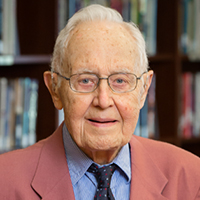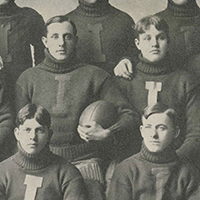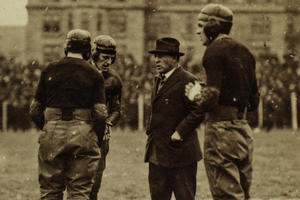-
CHAMPAIGN, Ill. — The mass spectacle that is now college football started small in the late 1800s, but the issues then were remarkably similar to today: amateurism versus professionalism, player eligibility, player safety, commercialization and the role of football in higher education.
Some fought against the trends and forces that have since transformed the game; others encouraged or accepted them.
Winton Solberg tells the story in “Creating the Big Ten: Courage, Corruption and Commercialization,” published this month, about the first half-century of a conference that would in many ways set the course for college football.

Solberg is a professor emeritus of history at the University of Illinois, specializing in the history of higher education and of the U. of I. in particular, for which he was honored last year. Now 96, he has written three books on the school’s history and is working on a fourth.
Most of the action in “Big Ten” is not on the field but off – in meetings, reports, policy arguments and news accounts. The “players” are mostly university presidents, faculty representatives, coaches, athletic directors, conference commissioners, critics and others at the center of the enterprise. There is no color commentary, but there are some colorful characters with colorful things to say.
As his book title suggests, Solberg took a critical look at how the American pairing of higher education and sports came to be, and what has resulted. He wrote that the U.S. is the only country in the world with such a system.
Those who started what would become the Big Ten made two basic commitments, Solberg wrote: to an amateur athletic code and to faculty control of intercollegiate athletics. However, those commitments “were never well-suited to American athletic culture,” in which “Americans play to win, not for love of the game.”
Intercollegiate athletics began at elite Eastern colleges in the 1880s, with students the prime promoters, Solberg wrote. Even then, the sports were often commercialized and “riddled with professionalism.” College authorities “had neither the time nor the inclination” to manage them – though some attempts were made to establish rules, with no success.

That changed in 1895 with a meeting in Chicago of presidents from six leading Midwestern universities – Chicago, Illinois, Minnesota, Northwestern, Purdue and Wisconsin – brought together to discuss football.
“The presidents objected to the alleged brutality of football but did not know how to stop it without abolishing the game, which they did not wish to do,” Solberg wrote. “Most of those present hoped to get what was best out of the game by regulating it.”
The next year, they formally established the Intercollegiate Conference of Faculty Representatives, known as the Western Conference and later the Big Ten. They then established a set of rules. The conference became “the pioneer in institutional cooperation in the control of intercollegiate athletics,” Solberg wrote. It “held the promise of imposing order on intercollegiate football in the Midwest, and it set an example in the national reform of intercollegiate athletics.”
Concerns about football persisted, however, bringing new calls for reform. The conference faculty representatives met in 1906, and out of that gathering came a highly critical report. It suggested a choice between suspending the game or addressing two primary issues: the game’s “physical danger and brutality” and the “moral evils attending upon the gradual raising of the game into a thing of absorbing and sometimes hysterical public and collegiate interest.”
A set of 14 rules was adopted, addressing player eligibility and training, number of games (five), the end of the season (early November), price of admission (no more than 50 cents), coaches’ salaries (no more than other faculty members of the same rank), faculty control of any financial surplus, and other matters. Solberg wrote that the meeting “was a high point in the history of the Western Conference.”
As Solberg framed it, the conference and college football progressed from disorder to order through World War I. With the war’s end, the future of the Big Ten, then “the nation’s premier athletic conference,” seemed bright, he wrote. The college game was enormously popular and “not nearly as brutal” under reformed rules and a more open style of play. The “Big Three” of college football at the time – Harvard, Princeton and Yale – also agreed to curb excesses in promoting the game.
“Nevertheless, a specter loomed on the horizon,” Solberg wrote, which was professional football. The link between college and professional football would tighten in the mid-1920s with the on-field exploits and popularity of Illinois icon Harold “Red” Grange and his recruitment to play for the Chicago Bears.
Solberg described the story of Grange and other post-1920 developments as part of a move from order to disorder. The Big Ten and other conferences fought a losing battle against frequent and widespread recruiting violations and subsidization of players. A prominent 1929 report that surveyed 130 schools showed that one in seven athletes was subsidized. And many critics had their say about the direction of intercollegiate athletics.
Solberg’s history ended with the Big Ten’s decision to return to participation in the Rose Bowl starting in 1947, something it had resisted for decades in opposition to postseason play.
“For years the Big Ten was courageous in upholding its rules and in opposing postseason games, all with a view to upholding academic values,” Solberg wrote in his epilogue. “But in time, corruption became widespread, and intercollegiate athletics became commercialized. The result was a strange perversion of the true spirit of university life.”
BY CRAIG CHAMBERLAIN | SOCIAL SCIENCES EDITOR, University of Illinois News Bureau
-
Editor’s notes:
To contact Winton Solberg, email wsolberg@illinois.edu.
“Creating the Big Ten: Courage, Corruption and Commercialization” is published by the University of Illinois Press.
